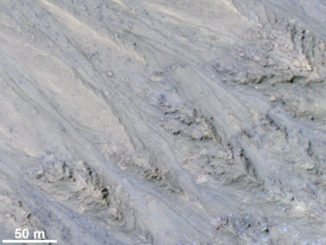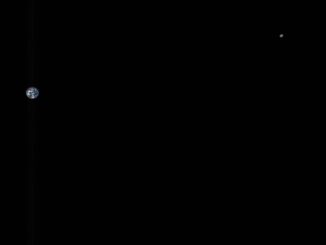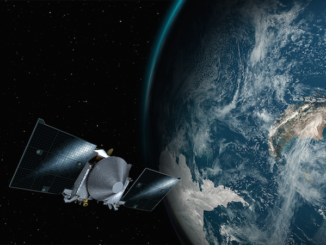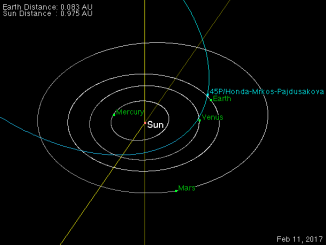
University of Arizona




The curious case of the warped Kuiper Belt
An unknown, unseen “planetary mass object” may lurk in the outer reaches of our solar system, according to new research on the orbits of minor planets to be published in the Astronomical Journal. This object would be different from — and much closer than — the so-called Planet Nine, a planet whose existence yet awaits confirmation.

First aerial colour photo of Mars rover’s “hole-in-one” landing site
NASA has released the first high-resolution aerial colour image of the Opportunity rover’s landing site on a sprawling Martian plain, where the airbag-cushioned robot fortuitously rolled into a Eagle Crater in January 2004, putting its scientific instruments face-to-face with a block of sedimentary rock that gave ground teams confirmation Mars was once a warmer, wetter, and habitable planet.

Worldwide pro-am help sought for comet trio study
Amateur and professional astronomers are invited to provide observations of comets 41P/Tuttle-Giacobini-Kresák, 45P/Honda-Mrkos-Pajdušáková, and 46P/Wirtanen that will pass by Earth at distances ranging from 0.08 to 0.15 astronomical units. Such close approaches of a trio of comets within the next two years are rare and typically occur only once every few decades.

New analysis supports subsurface ocean on Pluto
A liquid ocean lying deep beneath Pluto’s frozen surface is the best explanation for features revealed by NASA’s New Horizons spacecraft, according to a new analysis. The idea that Pluto has a subsurface ocean is not new, but the study provides the most detailed investigation yet of its likely role in the evolution of key features such as the vast, low-lying plain known as Sputnik Planitia (formerly Sputnik Planum).

Earth-bound CHARIS samples atmospheric gases of exoplanets
A team of scientists and engineers led by Princeton University researchers recently reported the successful operation of a new instrument for the 8.2-metre Subaru Telescope at the Mauna Kea Observatory on Hawaii that will allow astronomers to make direct observations and take spectra of planets orbiting nearby stars.

ALMA witnesses the birth of a triple-star system
A rare triple-star system surrounded by a disc with a spiral structure has been discovered by a global team of researchers. Recent observations from the Atacama Large Millimetre / submillimetre Array (ALMA) resulted in the discovery, lending support for evidence of disc fragmentation — a process leading to the formation of young binary and multiple star systems.

The supernova that wasn’t: a tale of three cosmic eruptions
Combining images taken with the NASA/ESA Hubble Space Telescope over more than 20 years, a team of researchers has discovered that Eta Carinae, a very massive star system that has puzzled astronomers since it erupted in a supernova-like event in the mid-19th century, has a past that’s much more violent than they thought.
